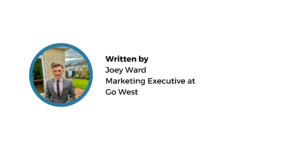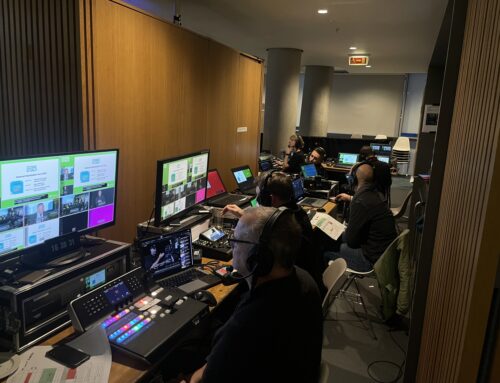
“This meeting should have been an email”
This feeling is all too common in companies around Ireland today. Employees feel like sitting in on meetings wastes time that can be easily avoided with a well-thought-out email. Half of the workday is taken up with people relentlessly talking in circles, never really getting to the core of any problem, leaving people with no sense of progress and a backlog of work to catch up on. It is an epidemic in corporate Ireland, and we have a theory that might change your perspective on how we use meetings to communicate at work.
Our article looks at how meetings are used today, and how a change for 2024 might shift the gears in your favour.
-
The problem with corporate meetings – The current situation
A meeting is a scheduled block of time, giving employees, managers and sometimes directors the chance to discuss ongoing projects. Different meetings have different objectives, or (at least they should), to encourage collaboration between colleagues towards the overall company mission. At its core, a meeting is a place where stakeholders gather together to contribute to the growth of an organisation.
That’s the main issue with meetings today. We need to catch up on the overall objective in any meeting: to improve the company’s bottom line. We are more concerned about the perception of communication by hosting pointless meetings rather than effective communication, which adds immediate value to your team. Maybe the problem is that we don’t trust our employees to make decisions for our organisation, and meetings are a means of micro-management dressed up as constructive and inclusive communication.

What can be done about this? Take a second and think about your own organisation and how meetings are used.
Is there room for improvement? I can bet there is.
-
Valuable Meeting Structure – The End Goal
We all want to see our team maximise productivity and reach their full potential. Lapses in focus and concentration are created when your day is broken up by meeting after meeting. These are impossible conditions for employees to engage in any type of “deep work” so they leave work feeling stressed, dreading what faces them the next day when they walk into work. All because of the pointless 1pm post-lunch daily meeting where things are said, but nothing is said. Then you get back to your desk feeling distracted and unmotivated, and don’t tick another thing off your to-do list for the rest of the day.
Thankfully this does not have to be the case. Here are some questions you should ask yourself before you schedule the next meeting;
-
What is the main objective of this meeting?
A meeting’s title and its purpose are different. When the goal isn’t clear, meetings can seem frustrating at best and stressful at worst. A meeting should clear up issues and provide clarity for people on topics, if it is failing to do this it should not be a meeting in the first place.
-
Could this meeting be an email?
What, if any, value will be created from having this meeting? You need to identify how the meeting will improve the business’s bottom line. When you apply this approach and ask yourself this question, you can ensure you stay true to the organisation’s overall mission. Although you should ask yourself this question with every big decision you make in business, it should be asked when you are making small decisions like, “Should we have a meeting about this?”
-
What is everyone’s role?
If you can’t avoid having the meeting you can avoid wasting individuals’ time demanding they be there. Make sure only people critical to the issue and the objective at hand are present. Having the right people there will maximise efficiency and let other employees stay on task. Remember key outcomes can always be noted in an email and disseminated to other team members in the department to keep everyone on the same page.
-
Shift your focus – The Solution
Now that we have covered the basics, you should understand the problem with how we are conducting meetings today. In this section of the blog we will investigate how we can move away from a calendar full of meetings to an effective meeting structure which saves people time and increases productivity.
A bottom-up approach:
Instead of filling people’s calendars with daily meetings, which often have no impact on the organisation’s progress, we suggest having a more robust meeting structure to meet company objectives. This can be done by looking at the ROI on each meeting held to determine what meetings are important and can be erased from people’s calendars.
By acknowledging the cost of each meeting and targeted ROI. If we hold a two-hour meeting with 10 attendees compensated at $100 per hour each, that meeting will cost $2,000 (excluding associated, indirect, and opportunity costs). Using this method, managers will be able to decide on a more effective meeting schedule focused on maximising returns and saving people time in the process.
Meeting Structure:
Your meeting structure should be the blueprint for how your meetings will be organised and more importantly who will be invited. Generally, your meetings will follow the organisational structure already in place. Having a defined meeting structure will eliminate the possibility of people attending meetings they don’t need to be at.
The most common organisational structure found in small to medium-sized organisations is a functional structure, dividing the company into departments based on functions such as marketing, sales, accounts etc. Employees should be invited based on their position in each department and the relevance of the meeting objectives to their role in the organisation.
Quality over quantity:
Implementing the right structure and focusing on ROI will drastically improve the quality of your meetings making the time spent in the boardroom more efficient, naturally reducing the meeting time in an organisation.
Here are a few more tips to improve your meetings for 2024;
-
Don’t use PowerPoint –
Instead, appoint someone to create a meeting brief covering all the main points of discussion. Before starting the meeting, sit silently and get everyone to read the document. Then, spend the rest of the allocated meeting time sharing opinions. This meeting strategy saves time and improves productivity at zero cost.
-
Define the “Why” –
Clearly explain to your attendees the importance of the meeting and highlight the main objectives. When attendees understand why, they are subconsciously more likely to participate. If you are not able to define why the meeting is taking place, should you be having it?
-
Information Sharing –
It is a good idea to appoint a person in your organisation responsible for collecting and disseminating the information needed before the meeting.
-
Topic parking lot –
Let go of the round-robin approach to meetings and ensure you end on time. Create a list of issues brought to the team’s attention that need to be discussed another time, this way you can be sure to stick to your objective.
-
Lead by example –
The leader’s responsible for guiding the meeting. Take charge and set meeting requirements. Examples include starting on time, having an agenda or capping at 50 minutes. At the end of every session, do a short poll (easy on a video call) on how the team met the three rules. Shine a light on the behaviour changes to make them habits!
In conclusion, time is our most valuable resource at work. We can not keep wasting countless hours in meetings neglecting important work that will actually help our organisation move towards a specific goal. Poor time management and meeting efficiency leads to an increase in employee stress and a decline in productivity. Managers cannot afford to ignore the need for a re-evaluation of their meeting practice, analysing how meetings are scheduled or structured, who is invited, and how they are run. By adopting a different approach to meetings, like looking at how the meeting impacts our bottom line we can stop wasting time with pointless daily meetings and start making consistent progress towards our strategic objectives.





